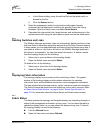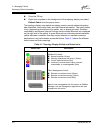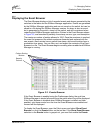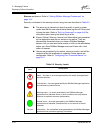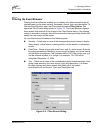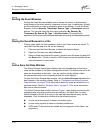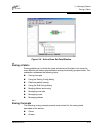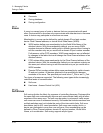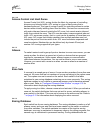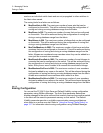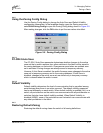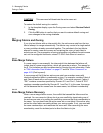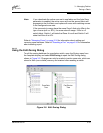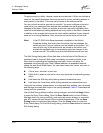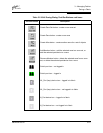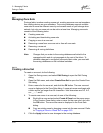
3 – Managing Fabrics
Zoning a Fabric
59048-04 Rev. B 3-15
D
3.4.1.1.2
Access Control List Hard Zones
Access Control List (ACL) zoning divides the fabric for purposes of controlling
discovery and inbound traffic. ACL zoning is a type of hard zoning that is
hardware enforced. This type of zoning is useful for controlling access to certain
devices without totally isolating them from the fabric. Devices can communicate
with each other and transmit outside the ACL zone, but cannot receive inbound
traffic from outside the zone. The ACL zone boundary is secure against inbound
traffic. ACL zones can overlap; that is, a port can be a member of more than one
ACL zone. ACL zones that include members from multiple switches need not
include the ports of the inter-switch links. ACL zone boundaries supersede soft
zone boundaries. Membership can be defined only by domain ID and port
number. ACL zoning supports all port types.
3.4.1.2
Aliases
To make it easier to add a group of ports or devices to one or more zones, you can
create an alias. An alias is a named set of ports or devices that are grouped
together for convenience. Unlike zones, aliases impose no communication
restrictions between its members. You can add an alias to one or more zones.
However, you cannot add a zone to an alias, nor can an alias be a member of
another alias.
3.4.1.3
Zone Sets
A zone set is a named group of zones. A zone can be a member of more than one
zone set. All zones that are not members of a zone set belong to the orphan zone
set. The orphan zone set is saved on the switch. Each switch in the fabric
maintains its own zoning database containing one or more zone sets. This zoning
database resides in non-volatile or permanent memory and is therefore retained
after a reset. Refer to ”Configured Zonesets Data Window” on page 4-15 for
information about displaying the zoning database.
To apply zoning to a fabric, choose a zone set and activate it. When you activate a
zone set, the switch distributes that zone set and its zones, excluding aliases, to
every switch in the fabric. This zone set is known as the active zone set. Refer to
”” on page 3-13 for information about displaying the active zone set.
3.4.1.4
Zoning Database
Each switch has its own zoning database. The zoning database is made up of all
aliases, zones, and zone sets that have been created on the switch or received
from other switches. The switch maintains two copies of the inactive zoning
database: one copy is maintained in temporary memory for editing purposes; the
second copy is maintained in permanent memory. Zoning database edits are



